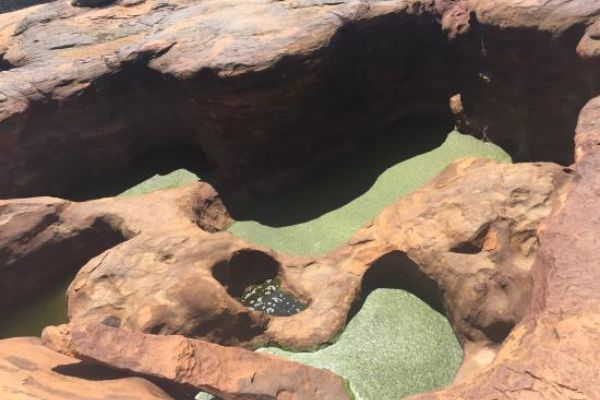Matsieng Footprints
Natural carvings known as Matsieng Footprints may be discovered throughout southern Botswana. Matsieng Footprints is one of the most famous historical sites in Botswana and the most well-known "Creation Sites" in southern Africa. The site's major feature is rock carvings, often known as petroglyphs. There are up to 117 engravings and three natural rock-holes on the site, which date from 3,000 to 10,000 years ago. Many of the tracks resemble human or feline footprints in appearance.
The Matsieng Footprints are located farther north on the main Gaborone to Francistown route, just past the community of Rasesa. A sandstone slab with two deep holes and carvings makes up this National Monument. According to legend, the Batswana's first ancestor, Matsieng, a big one-legged man, crawled out of one of the holes, accompanied by his people, domestic animals, and wildlife. The carvings, which are now very faint, were most likely created by Khoe herders in the early second millennium.
These are in the pattern of u-shaped footprints, with dots symbolizing animal tracks. In addition to the carvings, Matsieng Footprints has two huge holes. These may keep water for a long period depending on rainfall conditions. This famous Botswana monument has yet to be determined if the holes are natural or volcanic. The place is linked to a creation story that claims to explain cosmology. Matsieng is said to be one of the forefathers of the Sotho-Tswana, having emerged from the location with his people and animals.








